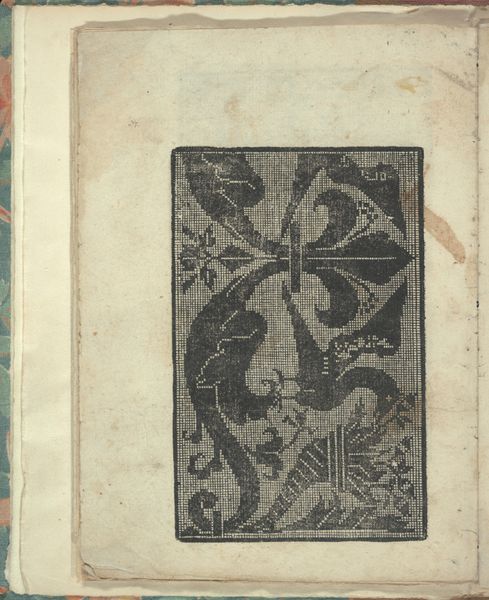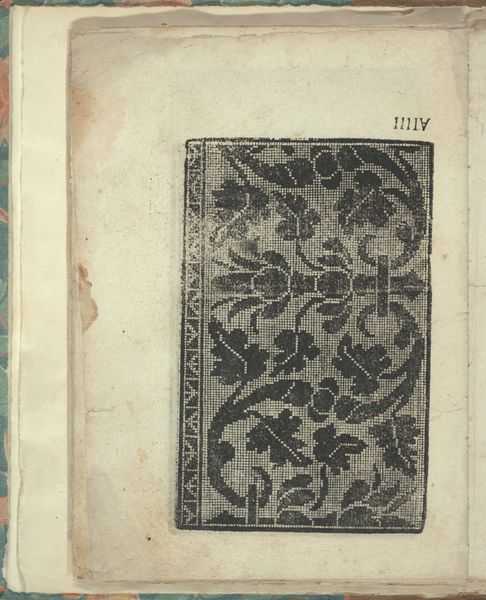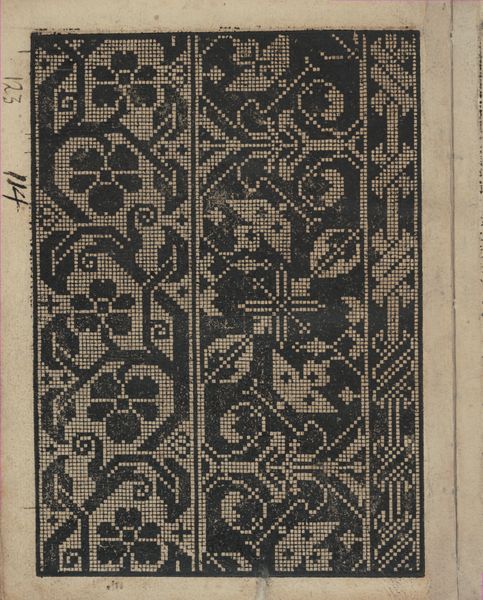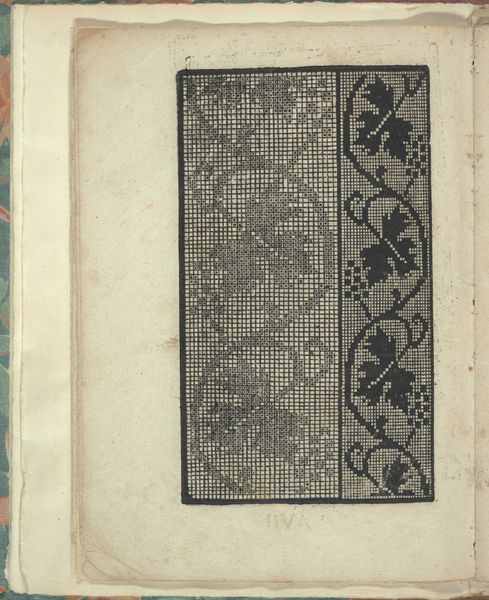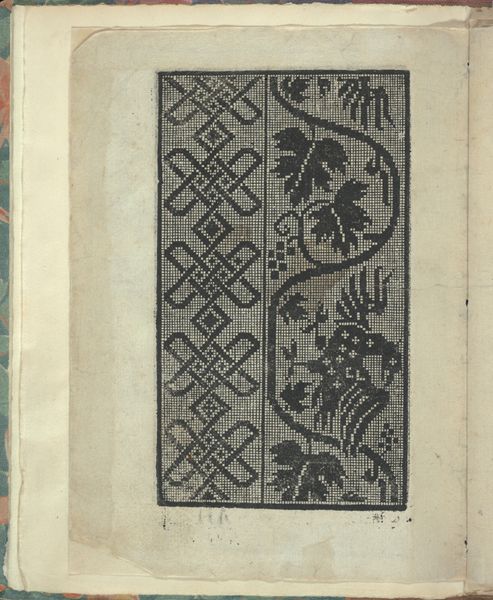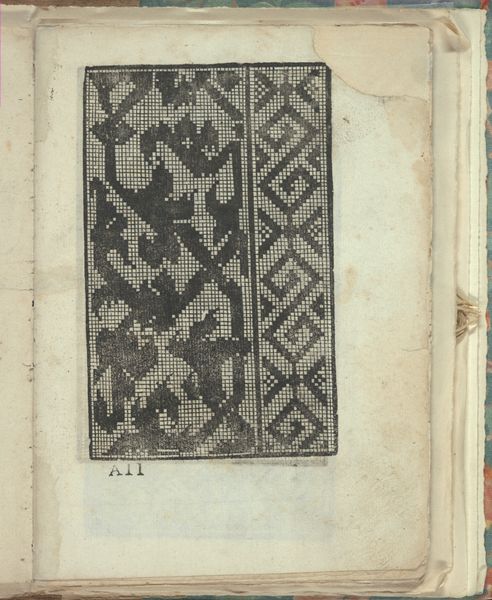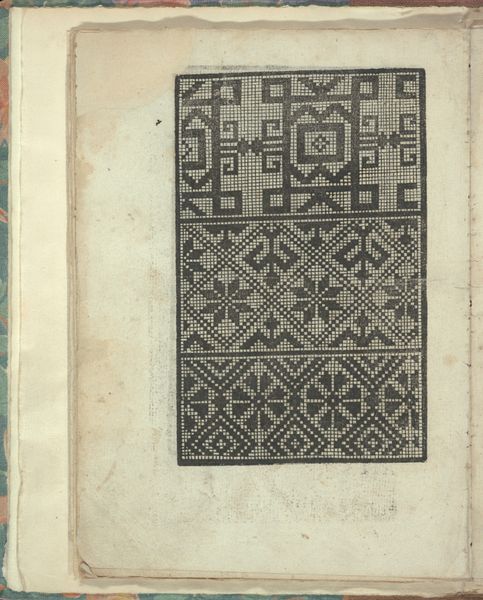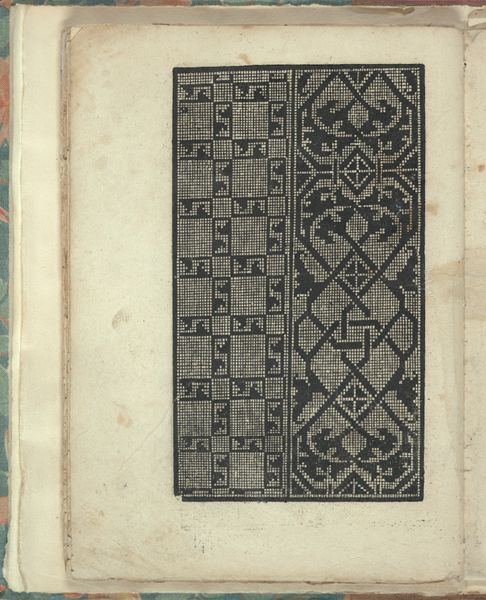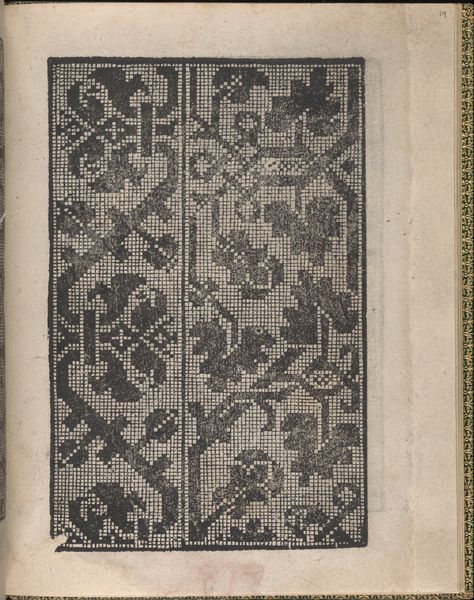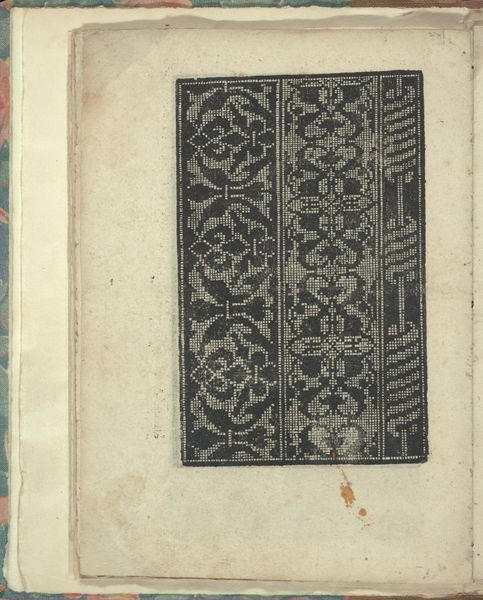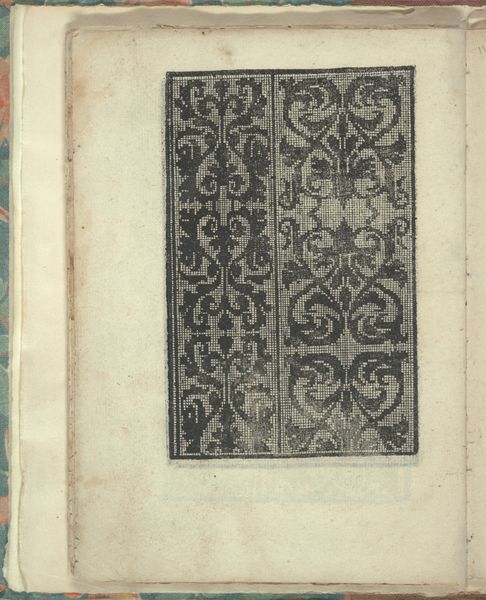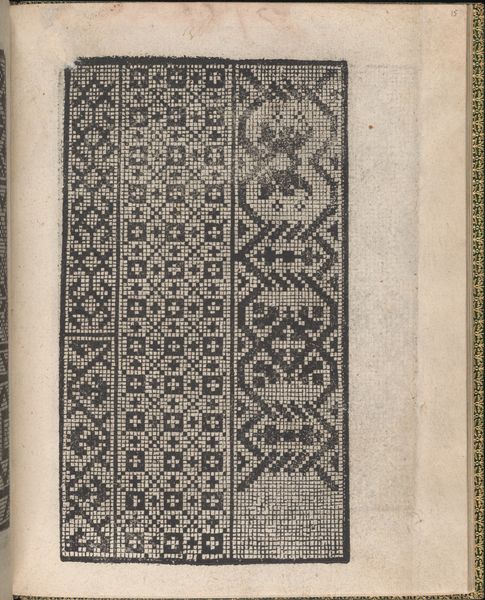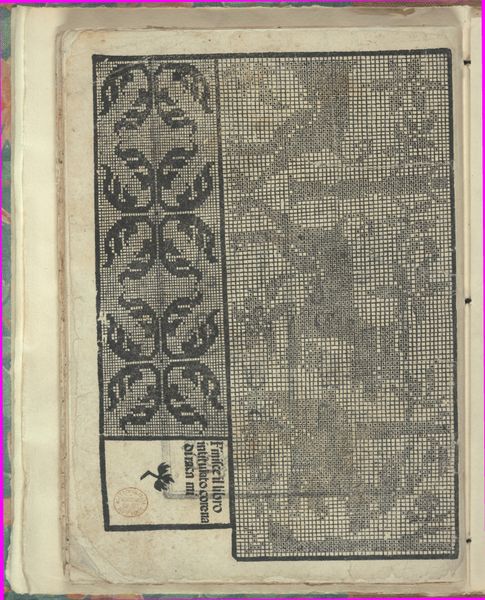
Opera Nova Universali intitulata Corona di racammi, title page (verso) 1530
0:00
0:00
drawing, ornament, print, paper, woodcut
#
drawing
#
ornament
# print
#
book
#
paper
#
11_renaissance
#
geometric
#
woodcut
#
italian-renaissance
Dimensions: Overall: 8 7/8 x 6 7/8 in. (22.5 x 17.5 cm)
Copyright: Public Domain
Curator: This is the title page from "Opera Nova Universali intitulata Corona di racammi," a woodcut print made by Giovanni Andrea Vavassore in 1530. The repeating geometric and organic designs give it quite a striking, almost modern feel for its age. What jumps out at you? Editor: The grid-like structure is fascinating! It looks like it's meant to be a guide for embroidery or some other kind of textile work. It blurs the line between fine art and practical craft, right? Curator: Exactly! What interests me most is how Vavassore uses printmaking, a technology of mass production, to disseminate designs intended for handmade, individual creations. It challenges the traditional hierarchy between "high art" and craft. Consider the materiality – wood, ink, paper – and the labor involved in both its production and its intended use. Editor: So, it's not just about the aesthetic of the design but also about how it was made and how it was intended to be used within a specific social context? Curator: Precisely. This book allowed for wider consumption and standardization of patterns, influencing the production of textiles and, perhaps, social displays of wealth and taste. How do you think the availability of such printed designs impacted the role of the individual artisan? Editor: I imagine it could have been both empowering and limiting. Empowering because it provided access to new ideas and potentially increased their market, but limiting because it also introduced a certain level of standardization. So it affected their autonomy in some ways. Curator: A very insightful point. We must consider how the means of production here impacts labor practices and ultimately influences cultural consumption and class structures in 16th century Italy. Editor: I hadn't thought about it in terms of labor practices before. It gives a completely new understanding to the art. Curator: Absolutely, looking at the materiality and context opens up the layers of the piece and gives a lot of meaning.
Comments
No comments
Be the first to comment and join the conversation on the ultimate creative platform.
